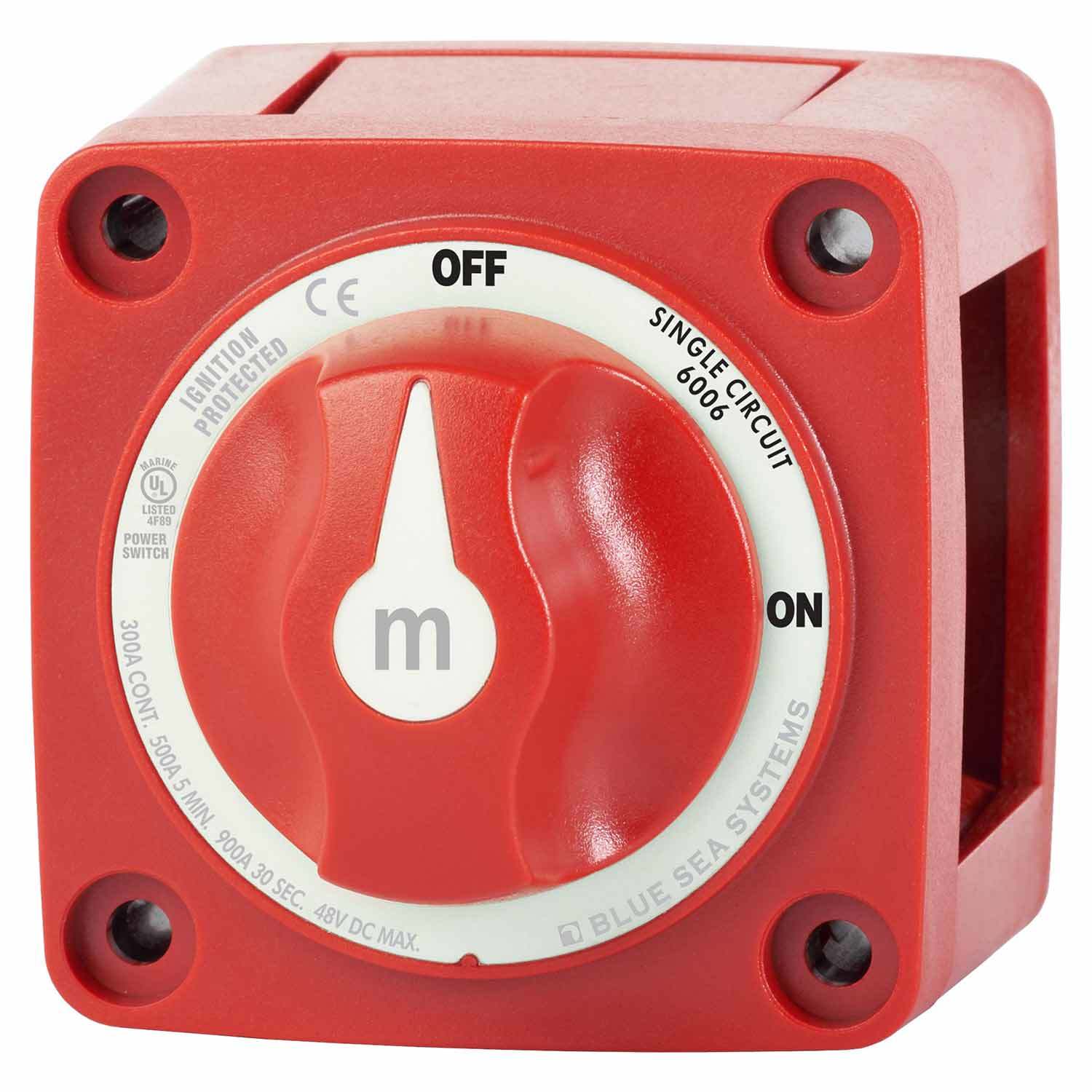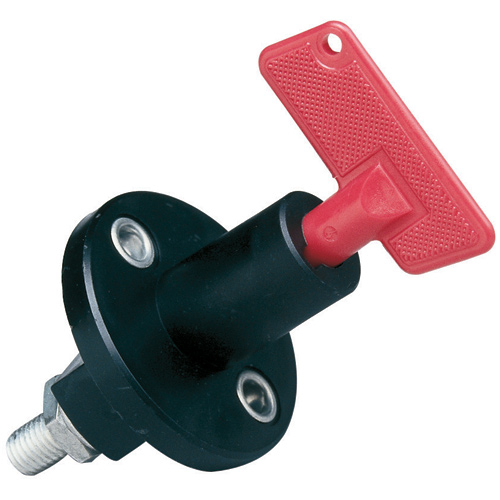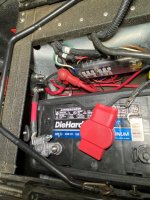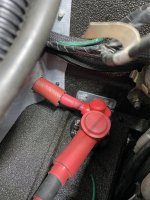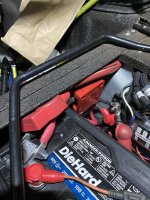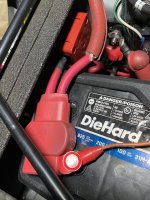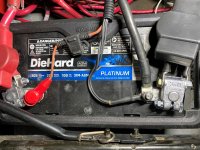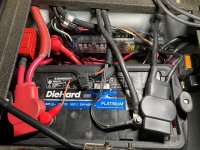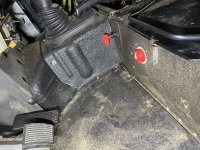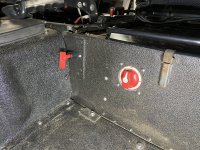2 things from me on this. For battery disconnects, I’m adverse to multiple paths back to the battery. if a short exists, then my disconnect is to shut off all power—I’m not sure where that short may be.
@donb if you shut off your battery with disconnect, it sounds like you are still charged to the ECU— so if short is on ECU feed, you have not protected it. More on what I’m doing in a sec.
There are two fully legit ways to disconnect battery: switch pos, switch neg. The key is to switch
everything Off the terminal. Both are effective. A singe accessory connected straight to battery defeats this, particularly ground. Some say only switch ground as there is no arc when you switch ground. That is the biggest load of shit I’ve ever heard. Proof? Take your terminal off your ground. That is switching ground. Touch that terminal to ground. Does it spark? Yes. Enough said. Current is constant throughout a circuit…same out of battery as return to battery. That’s how it WORKS. There are a LOT of pros on switching grounds and many auto components switch ground…and many that switch hot mixed in the same system…it just depends. If you switch everything off a terminal, both are equally effective.
Personally, and many here have seen my heated discussions on this on the other board, I’m in the switch positive camp. It is also a requirement for many Professional race cars. But my #1 main reason is the winch. I run a 1,2,1+2 switch And switch positive from my Odyessey 2150 battery. Switch 1 is truck on, winch off. Switch two is car off, winch on. Switch three is car and winch both on. Off is the entire positive terminal is disconnected, EVERYTHING off. Since there Are two grounds from a winch, one to the chassis, one directly to ground terminal, this type of dual switching is impossible. If the car is on, the chassis is grounded. If you operate the winch bad shit happens even if the main winch terminal is not grounded (disconnected)— ground finds a path….as it did to mine through the winch housing onto the solenoid and solenoids path to ground through chassis (resulting in solenoid housing getting red hot and winch barely working)… and that isn’t the intended path to ground. 100% my mistake on forgetting… yet there is only one path for positive…and I am positive (hehehe) that nothing works if that (+) is disconnected. It’s the right path for me…. But I’m not a manual and choose your own path.
Now back to the cummins. The glow plugs and most definitely the starter create surges. Motors always do. That is why big machinery use variable motor drives on start up to reduce surges (and reduced consumed power) as they can be severe. Batteries work as a buffer in a way (more on this at end). The closer to the battery, the more it buffers. The terminal on a battery is just a really short “wire” and provides the most accessible access to the internals to the battery. All I’m doing is extending the battery terminal to the disconnect switch and I oversize that cable and keep it as short as possible. Switch leg 1 has my ECU, my secondary fuse/relay accessory box (via circuit breaker), and my under hood remote positive terminal all connected to it. With the switch on 1, everything but winch is powered. (Switch 2 terminal is winch). Under the hood, my under hood remote positive terminal (on terminal 1 of disconnect) is connected to starter, glow plugs and some stout, non-circuit board accessories (Due to very real starter surge). I plan to run this past cummins on my 9” extension (I think it is 2/0 or 4/0 for that one extension) and if that is suitable to protect ecu from surge due to oversized capacity of wire to allow the surge to find that path as the best, most direct path of draw), but I believe the short oversized cable will be good. If I get a reply, I’ll let you know.
Now, back to buffers. That is a loose descriptive term as a battery isn’t a buffer, nor a capacitor. Well, it’s sort of is a really slow discharge capacitor in a way…but I digress. A surge is a massive spike of power draw for very short duration. It has two effects— one is that it draws power from everywhere. Just like flushing a toilet right next to a shower— your showers pressure drops when you do. If you have a big house and the toilet is right next to a shower, you notice the pressure drop as you are on the same, smaller, secondary water line to the bathroom—but if toilet on on opposite side of house is flushed, you don’t (assuming water main into house is properly sized). You never notice a neighbor flushing their toilet and they are on same H2O main. it has to do with water capacity of line you are on. The same is true of power. If you a remote pos terminal under hood that also has your ECU, then that is like your secondary water line to your bathroom. When you have a big surge draw (like the starter), you rob power from all accessories including ECU On that line UNLESS the entire line has enough capacity to handle the surge with minimal resistance. Then when starter solenoid shuts off the starter, that power is momentarily in that power line and you don’t want that dissipating through ECU— you want it going back in battery. So you need the easiest path back— in my case, the oversized short wire will provide it as it is the path of least resistance Compared to going into the ECU. Hence the oversized, short cable. ELECTRICITY ALWAYS FOLLLOWS THE PATH OF LEAST RESISTANCE. Short cables have less resistance than long. larger gauge have less resistance as well. (In the water system, this surge absorption is done by a water hammer, often put on large draw lines like sprinklers. Capacitors serve this function in a lot of electrical systems, but I’m not planning to go that route).
Make sense?
I just wanna point out one more thing and that is that if anyone has info that I didn’t think of please chime in! I can change my mind in a heartbeat if I missed something. I never fight for a cause just a fight.
